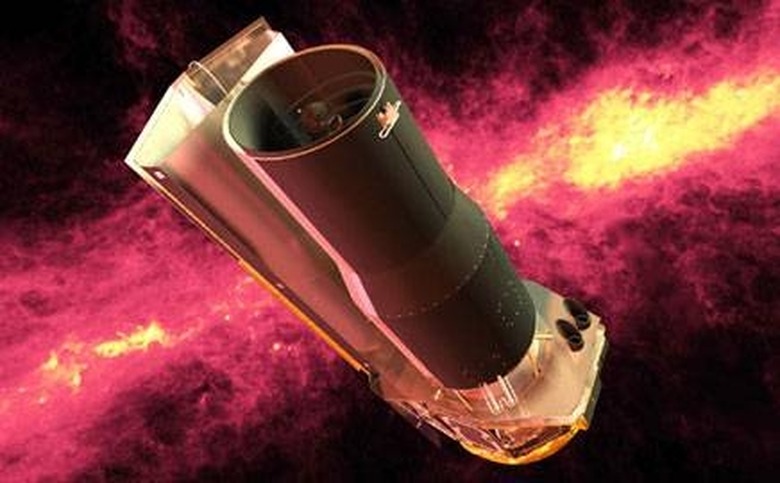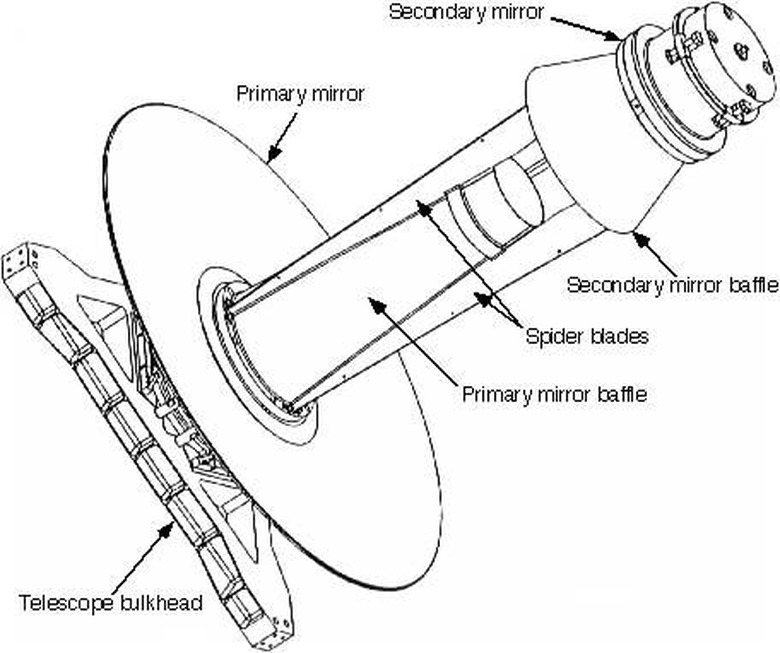How Does An Infrared Telescope Work?
Design
Design
Infrared telescopes use fundamentally the same components and follow the same principles as visible light telescopes; namely, some combination of lenses and mirrors gathers and focuses radiation onto a detector or detectors, the data from which are translated by computer into useful information. The detectors are usually a collection of specialized solid-state digital devices: the most commonly used material for these is the superconductor alloy HgCdTe (mercury cadmium telluride). To avoid contamination from surrounding heat sources, the detectors must be cooled by a cryogen such as liquid nitrogen or helium to temperatures approaching absolute zero; the Spitzer Space Telescope, which at its launch in 2003 was the largest ever space-based infrared telescope, is cooled to -273 C and follows an innovative Earth-trailing heliocentric orbit whereby it avoids the reflected and indigenous heat of the Earth.
Types
Types
Water vapor in the Earth's atmosphere absorbs most infrared radiation from space, so ground-based infrared telescopes must be sited at high altitude and in a dry environment to be effective; the Observatories at Mauna Kea, Hawaii, are at an altitude of 4205 m. Atmospheric effects are reduced by mounting telescopes on high-flying aircraft, a technique used successfully on the Kuiper Airborne Observatory (KAO), which operated from 1974 to 1995. The effects of atmospheric water vapor are, of course, eliminated altogether in space-based telescopes; as with optical telescopes, space is the ideal location from which to make infrared astronomical observations. The first orbital infrared telescope, the Infrared Astronomy Satellite (IRAS), launched in 1983, increased the known astronomical catalog by about 70 percent.
Applications
Applications
Infrared telescopes can detects objects too cool—and therefore too faint—to be observed in visible light, such as planets, some nebulae and brown dwarf stars. Also, infrared radiation has longer wavelengths than visible light, which means it can pass through astronomical gas and dust without being scattered. Thus, objects and areas obscured from view in the visible spectrum, including the center of the Milky Way, can be observed in the infrared.
Early Universe
Early Universe
The ongoing expansion of the universe results in the redshift phenomenon, which causes radiation from a stellar object to have progressively longer wavelengths the farther from Earth the object is. Thus, by the time it reaches Earth, much of the visible light from distant objects has shifted into the infrared and can be detected by infrared telescopes. When coming from very distant sources, this radiation has taken so long to reach Earth that it was first emitted in the early universe and so provides insight into this vital period of astronomical history.
Cite This Article
MLA
Ogilvie, Paul. "How Does An Infrared Telescope Work?" sciencing.com, https://www.sciencing.com/infrared-telescope-work-4926827/. 24 April 2017.
APA
Ogilvie, Paul. (2017, April 24). How Does An Infrared Telescope Work?. sciencing.com. Retrieved from https://www.sciencing.com/infrared-telescope-work-4926827/
Chicago
Ogilvie, Paul. How Does An Infrared Telescope Work? last modified August 30, 2022. https://www.sciencing.com/infrared-telescope-work-4926827/

